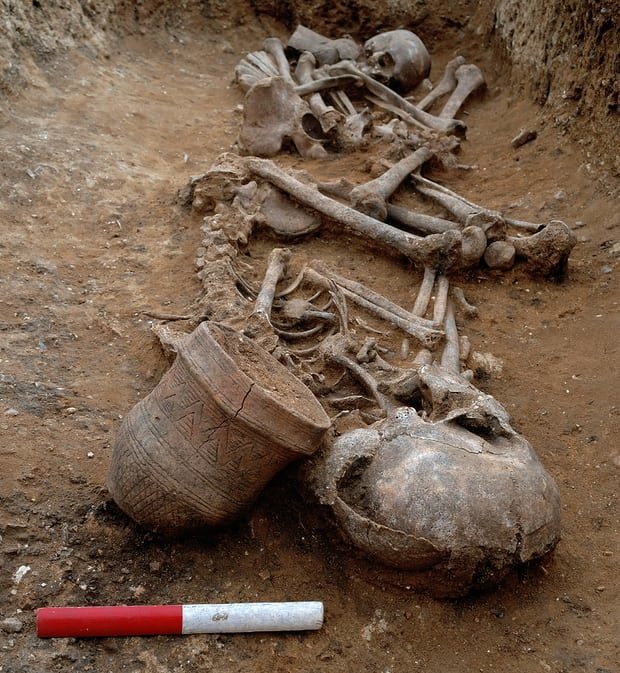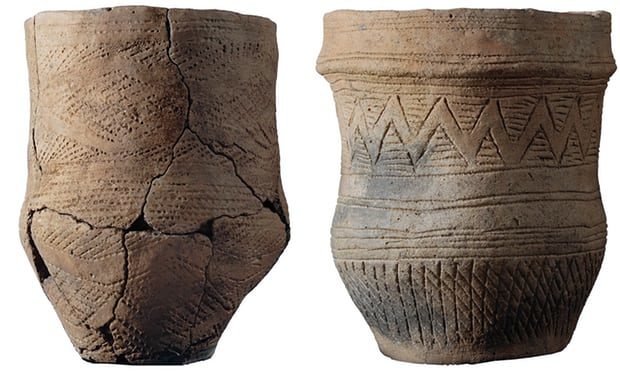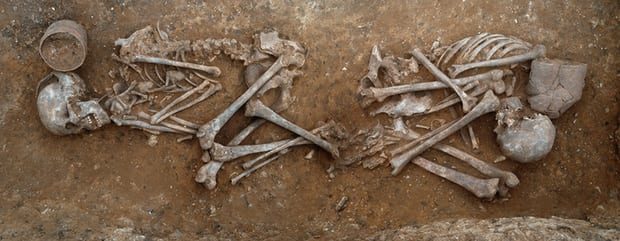
The very existence of the Beaker folk - whose ancestry lay in central Europe and further east to the Steppes - and Beaker culture has been questioned in the past. The actual beakers, striking clay drinking vessels with an elegant flared lip, were clearly among the most treasured possessions of the people who were buried with them, and have been excavated from graves across Europe for centuries. However, archaeologists could not agree whether they represented a fashion spread by trade and imitation, or a culture diffused by migration.
Now a massive international project, involving hundreds of scientists and archaeologists and almost all the major laboratories in the field, has provided some of the answers. Using samples of more than 400 prehistoric skeletons from across Europe, researchers have uncovered new information about a period when a wave of migration rolled westward across Europe, almost totally displacing the earlier population in many places - including Britain.

Ian Armit, an archaeologist from the University of Bradford, and a senior author of the study now published in Nature, said: "The pot versus people argument has been one of the most important and long-running questions in archaeology.
"The picture is more confused on the continent, where we have not been able to match DNA closely to the Beaker burials in all cases, but in Britain the effects were dramatic. The people buried with the beakers did not have the same DNA as those from an earlier period, and the effect endured. In the centuries after the Beaker burials the DNA shows that the earlier Britons did not just come slipping back out of the woods."
The study included remains of 155 individuals who lived in Britain between 6,000 and 3,000 years ago, with many samples taken from skeletons which have been in museums since the 19th century. The individuals studied included an enigmatic double burial from Trumpington in Cambridge - a teenage boy and girl, each with a beaker. There was no obvious cause of death, but the study proved they were cousins.
Another was the famous Amesbury Archer, described by Armit as "the poster boy for the Beaker people", buried near Stonehenge in around 2300BC and rediscovered on the site of a new housing estate in 2002. His grave is the richest ever found in Britain from the period. He was buried with no fewer than five beakers, gold hair ornaments, an archery wrist guard - another object found in many Beaker burials - and a dagger. The isotopes in his teeth proved that he grew up near modern Switzerland, but that technique can only give evidence for the individual's own life, not their ancestry. The scientists' success in extracting ancient DNA has now pushed the evidence for ancestry generations further back. It turns out the Amesbury Archer, as with the teenagers, was a Beaker man from central Europe.

In Britain the puzzle remains of what happened to the pre-Beaker population: people who had no metal tools but were capable of stupendous communal projects such as the construction of Stonehenge and the giant artificial hill of Silbury.
"It's not necessarily a story of violent conquest," Armit said. "There is some evidence of a declining population and increased growth of forests, suggesting that agriculture was in decline. We could be looking at climate change, or even an epidemic of imported disease to which they had no resistance. But we certainly now have the evidence that they were replaced - and they never came back."



Comment: As noted in: Trojan War? New genetic study shows invaders may have ousted Stonehenge people
This Stonehenge study kinda supports Wilkens, "Where Troy Once Stood." The dates may be a bit different, though. For more on Wilkens' ideas see Laura Knight-Jadczyk's article, Where Troy Once Stood: The Mystery of Homer's Iliad & Odyssey Revealed. Here's an excerpt: Also See: